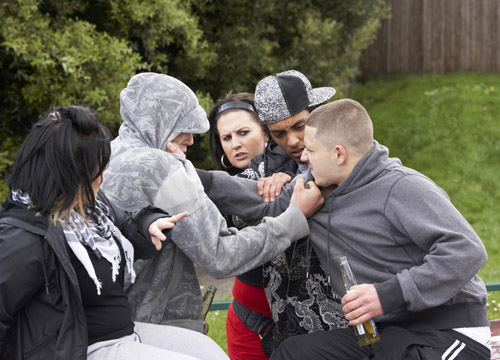
Climate change is a problem in itself – as a result of melting polar ice and increased temperatures, the world is already experiencing worsening droughts, stronger hurricanes, and heavy winter storms. There are floods in one part of the country while uncontrolled wildfires rage through the other areas. Animals such as the polar bear are becoming endangered due to the loss of ice. One endangered species leads to the endangerment of another, and droughts lead to food shortages and higher prices for food and clothing, which leads to more recession… We know there are many climate change problems. However, now researchers have discovered that aside from all of these easy-to-imagine problems that come with climate change, there is at least one consequence that hadn’t been considered – violence can increase with climate change.
We already know that in summer heat waves there’s an increase in domestic violence, city crime rises, riots are more likely and even a traffic jam or long line can cause tempers to flare. A new study has shown that aggression can be associated with increased temperatures. On an August airing of CBS This Morning: Saturday, Time Magazine senior science editor Jeffrey Kluger said, “Scientists found that as soon as you move off of the average of either temperature or rainfall by a certain amount you get an uptick in small-scale violence, one-on-one or little bar brawls of 4 percent, and you get large-scale violence increasing 14 percent.” He added that this could instigate governments collapsing and large-scale riots.
This isn’t just one study. According to CNN and the journal of Science, analysis of at least 60 different studies suggests that even a 2 degree difference in climate change could have serious effects, with the risk of large scale inter-group conflicts such as civil war increasing by 50% by 2050. And it’s not just heat that causes these climate change problems – the studies also suggest that violence breaks out with large-scale rainfall, especially in civilizations dependent on agriculture, and drought, which is how researchers believe the Mayans met their downfall.
Berkley researcher Solomon Hsiang’s 2011 study suggests that the El Niño Southern Oscillation is responsible in part for 21% of civil conflicts from 1950-2004. It also determined that intergroup conflict increases 14% for each standard of deviation in climate and interpersonal conflict increases 4%.
Why would this be? Shifts in climate affect not just the weather, but also the ability to grow crops and harvest food, ability to collect sufficient water. This, in turn, affects the economy and food prices. When people worry that food is scarce, this can lead to riots and violence. Other studies suggest that the increase in temperature can affect a person’s ability to reason and correctly interpret events. In short, when it’s hot out and people are hungry, they’ll fight to be able to put food on the table.
Researchers say the effects will be worse in areas that already have considerable economic challenges and instability. For example, in Hsiang’s study, it was pointed out that Sudan and Rwanda, poorer countries, were more affected than Australia, for example. Because these areas already are somewhat on the brink, climate problems could be the tipping point that pushes them over the edge.
The good news is that by conducting studies such as these today, scientists and governments have time to come up with solutions to prevent violence from happening as a result of climate problems. Knowing the possibilities that are out there might help spur people into action, and anything we can do to improve climate change will be a step in the right direction.

